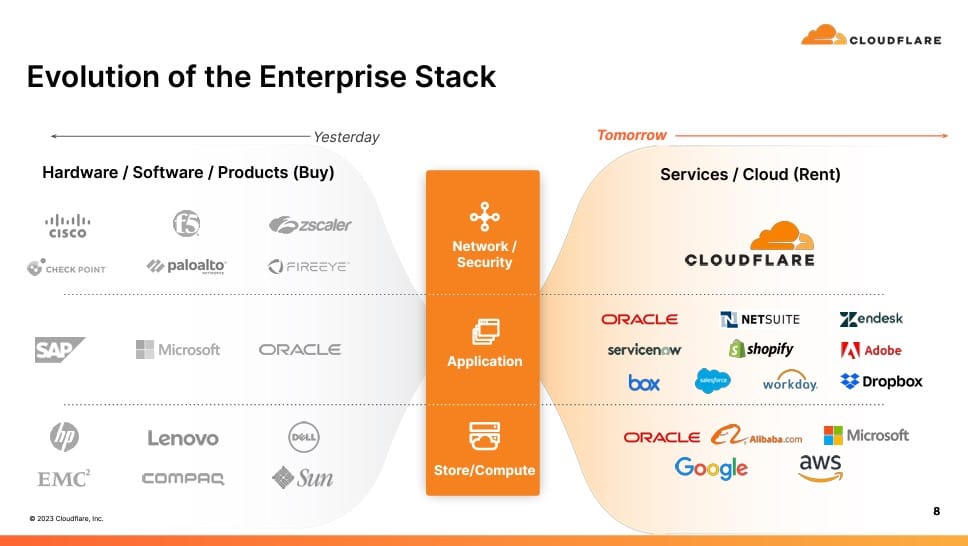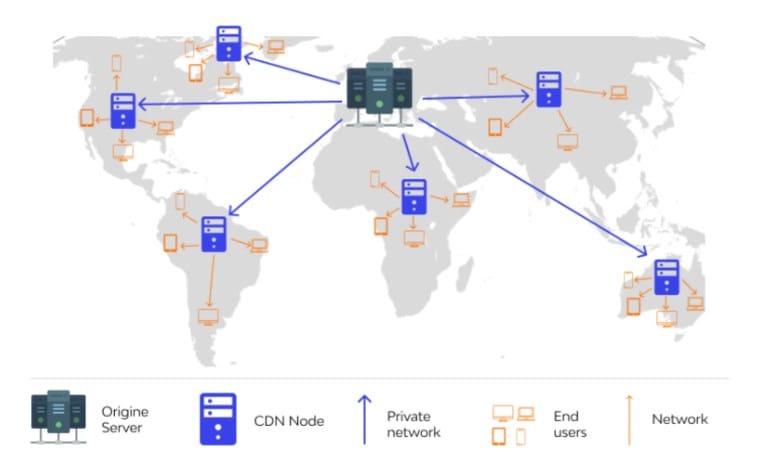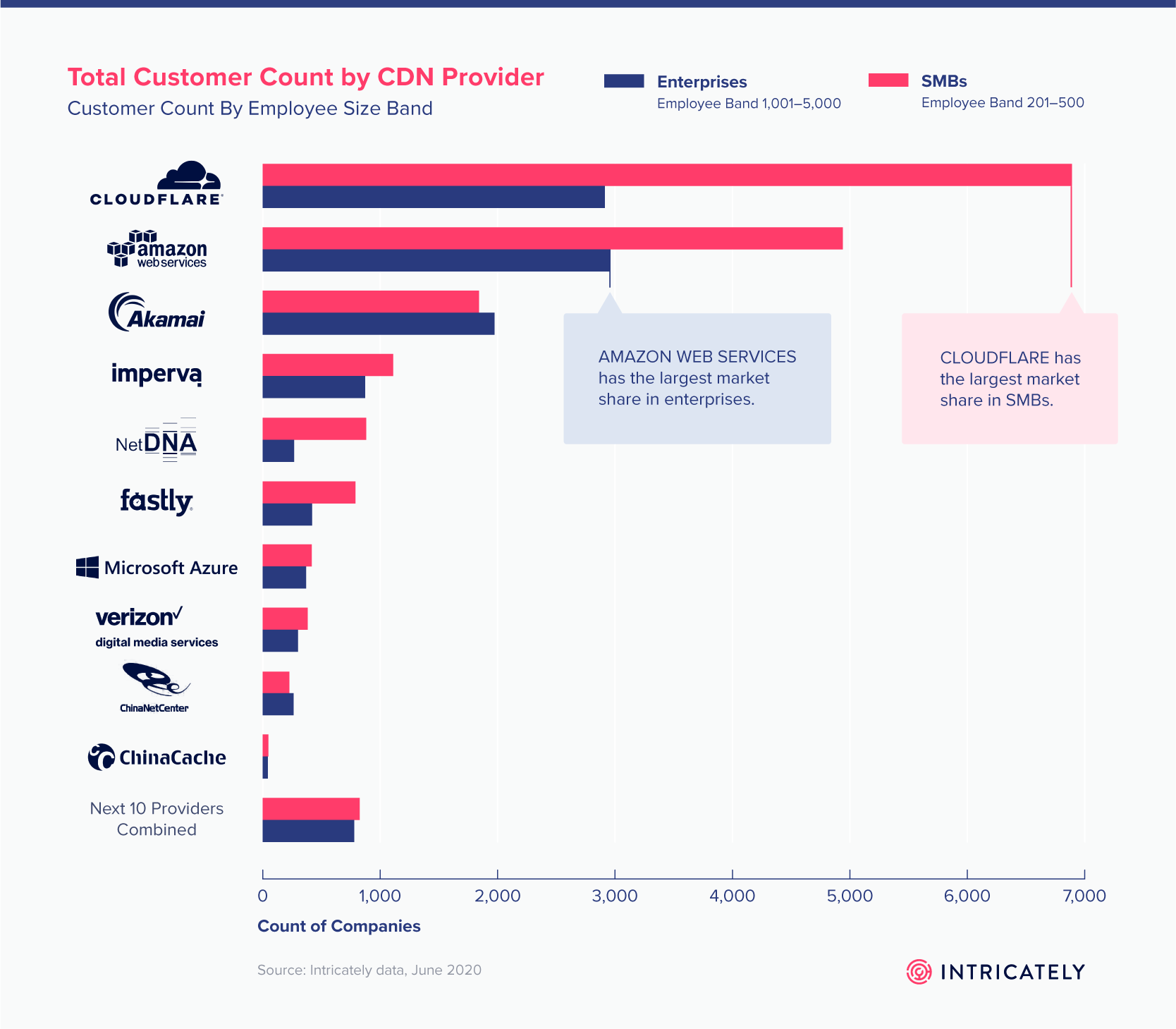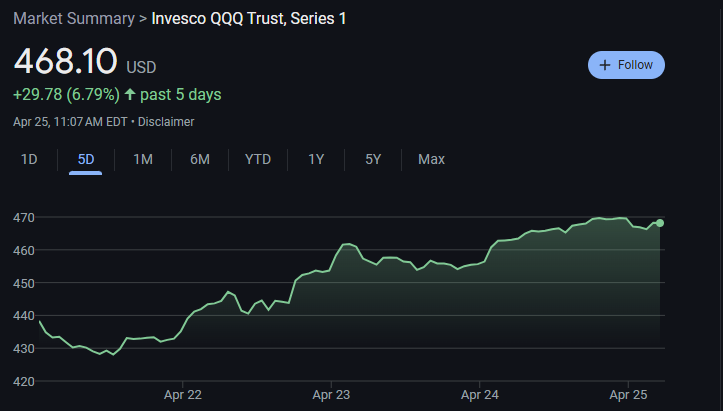Trade Alert: Cloudflare (NET) – The Infrastructure Powering The AI And Space Revolutions

First off, we will do this week’s chat at our usual time — (Wednesday, September 20) at 3:00 pm ET in the TradingWithCody.com Chat Room or you can just email us at support@tradingwithcody.com.
Secondly, let’s talk about RocketLab RKLB.
We are holding tight on RKLB for now after trimming it when it was much higher earlier this year as mentioned in the trade alerts. For those that have not seen, one of RKLB’s Electron rockets failed early this morning. This is the first time one of its rockets has failed in two years. The company has been focused on increasing launch cadence and we are a little concerned that RKLB may not have the technology to maintain the launch rate it has been shooting for. Additionally, RKLB will not be able to launch Electron again until they resolve the issue and receive approval from the FAA to do so. We are not in any rush to make this a bigger position right here. We will let you know if/when we decide to buy more. We obviously still believe in The Space Revolution and this company should be a winner in it, but there is a lot of risk with owning RKLB (as with any stock) and we have to be disciplined and conscious of the facts on the ground, and manage that risk appropriately.
Now let’s talk about our new long, a good company that’s well positioned for The AI Revolution and, yes, The Space Revolution too…
We are starting a new position in Cloudflare (NET). The AI Revolution is happening right now. ChatGPT, Google Bard, Myjourney, Dall-E, and other generative AI applications have shocked the world with their ability to provide creative, beautiful, smart, and (mostly) useful responses to text-based queries from humans. Tesla is close to achieving full self-driving and is currently training its own in-house AI supercomputer, Dojo, to drive vehicles like a human. While there is still a lot of room for improvement, these early generative AI applications have demonstrated the possibilities of what AI can do for ordinary people and organizations. The possible productivity gains and cost savings stemming from AI will lead to multi-trillion dollar shifts and growth in the economy and also create many successful businesses that we will hopefully invest in one day.
Despite the recent advances in AI, we think that we are clearly still in the early innings of this Revolution. Most of these AI applications do not have clear commercial use cases and we think only time will tell which AI applications will reach critical mass and actually become real, investable businesses (not to mention most of these companies are privately held). But because of AI’s obvious potential to reshape life as we know it, we certainly want to have our money in the AI bucket so we can benefit from its eventual success. Today, it is clear that a handful of companies are critical pieces of the infrastructure enabling the AI Revolution and are the clearest near-term winners in the AI Revolution. Cloudflare is one of those companies.
Cloudflare is also one of the platforms powering the Space Revolution. As discussed below, Cloudflare is partnering with SpaceX to provide content delivery network (CDN) services for the Starlink internet system. While we don’t yet know all of the space companies that will be created and ultimately successful, we do know that the Space Revolution is one of the most obvious trillion-dollar economies that will be developed over the next several decades. As many of these companies will likely want to transmit information and data back to Earth, they may look to Cloudflare, as SpaceX has, to connect their satellites to Cloudflare’s vast network of servers scattered around the world. As Cloudflare is a major part of the backbone of the internet, we think the company is a great pick-and-shovel play on the future of the Space Revolution as well.
Cloudflare Inc
NYSE: NET
Share Price At Time of Analysis: $60.14
Key Metrics.
- Market Cap: $20,097 mm
- Total Revenue (ttm): $1,127 mm
- Gross Margin: 75.60%
- Net Cash (mm): $196 mm
- Price/Sales (ttm): 17.83
- Q2 2023 YoY Revenue Growth: 31.54%
Synopsis.
Cloudflare is one of the fastest-growing cloud companies on the planet and has two multi-billion dollar kickers that have us excited about the stock. As perhaps one of the best-positioned cloud companies for the AI Revolution, Cloudflare is poised to accelerate revenue growth as generative AI becomes a greater part of our everyday lives. Unlike many of the so-called “AI” companies today, Cloudflare is a real business that turns out to be well-positioned to benefit from the rapid development of generative AI. Moreover, the company is taking market share in two key markets that we want to be in front of, networking and cybersecurity, and recently entered into a partnership with SpaceX to help increase the speed and availability of Starlink. While this stock is definitely not cheap, it has several similarities to our only other cloud pure-play in the portfolio, Snowflake (SNOW), which has been great for TWC subscribers so far. Like Snowflake (which also is not cheap), Cloudflare is growing revenue by 30%-35% per year and will likely continue to do so for the next 3-5 years or longer and is similar to Snowflake in that it is a public-cloud-agnostic platform used by many huge companies and governments.
Background.
Cloudflare was founded in 2010 by Matthew Prince (CEO), Michelle Zatlyn (COO), and Lee Holloway. The company’s mission is “to help build a better Internet.” The three founders were college friends and they started a project to track email spam and other cyber threats known as “Project Honey Pot” (still in use today). Thousands of websites signed up to use Project Honey Pot and eventually the creators decided to make a cybersecurity company to help stop the cyber threats they were tracking and actually defend websites. Thus, Cloudflare was formed and the company came public in 2019 at $15/share.
Cloudflare quickly expanded beyond simple cybersecurity and today has three large business categories that encompass its product offerings (1) application services; (2) Cloudflare One (Zero Trust and network services); and (3) developer services. Cloudflare has seen rapid growth as businesses shift from owning physical networking hardware to renting networking and cybersecurity services in the cloud.

Content Delivery Networks (CDN).
At the core of Cloudflare’s offerings is its content delivery network, or CDN. Here is a very simple explanation of how CDNs work from Shopify:
A content delivery network, sometimes referred to as a content distribution network, is a group of geographically distributed and interconnected servers that bring web content closer to a website’s users. CDNs reduce network latency (or wait time) and ensure better performance for webpages and applications.
Instead of everyone in the world accessing a single server for a particular website, website content is stored on servers around the world, nearer to where the expected users are located. Content delivery networks are critical for website content to run as expected with millions of users online at any one point in time. CDN services essentially help website owners ensure content can be loaded quickly.
To compare it to the world of fast food, you wouldn’t drive to a McDonald’s several states away to get a Big Mac. You’d go to a local franchise in your area.

Cloudflare owns a network of “CDN nodes,” a/k/a servers, across the globe. The CDN nodes hold “cached content,” which is a copy of the original content stored in a central “origin server.” The CDN nodes are located near where user requests are expected. This is known as the “edge” of the network. Cloudflare’s CDN consists of 300 data centers in over 250 cities in 100 countries around the world. Today, roughly 20% of all websites are routed through the Cloudflare network. Cloudflare boasts the highest customer count of any CDN provider in the world, although AWS has a larger number of enterprise customers:

Cloudflare’s CDN offers users and owners of content two distinct advantages. First, latency is reduced because the user is physically much closer to the content than they would be if the request had to be routed halfway around the world to the origin server. Second, the CDN offers an additional layer of security for the content owner. Because the requests are sent to Cloudflare’s servers at the edge of the network, rather than the origin servers, Cloudflare acts as an additional layer of protection from malicious actors seeking access to the origin servers where they could potentially cause damage to the content owner’s website, service, etc.
Cloudflare is not the only CDN provider in the world. Companies like Akamai (AKAM), Amazon (AMZN), and Verizon (VZ) also offer CDNs. What sets Cloudflare apart is that it offers an integrated set of web services from a unified platform. Akamai, for example, does not offer the extensive suite of cloud-based cybersecurity features offered by Cloudflare. Cloudflare also offers the advantage that it can be used alongside any of the hyperscale public clouds like AWS, Azure, or Google. For example, think of a big bank like J.P. Morgan that is storing tons of sensitive data on AWS servers in the US. It also has lots of customers in Asia, but AWS may not have huge data centers close to all of J.P. Morgan’s customers in Asia. Thus, J.P. Morgan could sign up for Cloudflare and cache data for its Asian customers on Cloudflare’s edge servers sitting closest to the customers in Asia. You can see how Cloudflare supplements the services offered by the major public cloud companies. It’s also worth mentioning that Cloudflare announced in May that it can be integrated with Snowflake, thereby allowing users to load data from Cloudflare into Snowflake (deep dive on SNOW forthcoming). This further enhances Snowflake users’ ability to manage their data, which may be stored in remote locations on Cloudflare servers, from one central platform (Snowflake).
Demand for CDNs has also been accelerated by the creation of more and more media-rich content. A simple website like TradingWithCody.com does not contain that much digital content, and thus, the difference in latency for users in different locations around the globe is probably not noticeable. On the other hand, Netflix and TikTok are storing and transmitting thousands of terabytes of data all around the world every day. There would be a huge difference in the latency of streaming a movie on Netflix in Manhattan versus Cambodia if all of the data was exclusively stored on servers in the US. Thus, CDNs have seen rapid growth as streaming, video generation, and other forms of content-rich media continue to grow nearly exponentially.
The multi-billion dollar kickers.
While Cloudflare’s existing strategy will keep the company growing at a fairly rapid clip, there are at least two multi-billion dollar growth opportunities available to Cloudflare that could propel the company to grow even faster than most analysts expect.
First, SpaceX reportedly partnered with Cloudflare to help improve the speed and reliability of its Starlink internet service. While details are still sparse, it makes sense that SpaceX would choose Cloudflare to enhance the speed of the Starlink network. Cloudflare is already connected with 12,500 internet service providers (ISPs) and has servers that can provide service to 95% of the world’s population within 50 milliseconds (ms). Starlink already has 1.5 million subscribers and that number could grow to at least 20 million subscribers in the next 3-4 years (In 2015, SpaceX thought it would hit the 20mm mark by 2022). We think that a large part of Starlink’s growth will come from rural areas around the globe that have thus far been unable to access high-speed broadband. Starlink may never be able to match the speed of internet available in major cities in the US and Europe, but there is still a very large market in underdeveloped countries, rural areas, small towns, and even suburbs where traditional ground-based networks (fiber, phone, and cable) provide inadequate speed or are unavailable entirely. SpaceX’s partnership with Cloudflare will likely capitalize on Cloudflare’s servers’ close proximity to many of these future customers and could be a major growth driver for both companies going forward.
Cloudflare’s second multi-billion dollar kicker is AI. On the latest conference call, Cloudflare’s CEO made clear that most of the AI startups out there have chosen Cloudflare as their cloud service provider (CSP). To understand why generative AI companies are choosing Cloudflare as their cloud provider, you need to understand the difference between AI training and inference. AI training is “the process of teaching an AI system to perceive, interpret and learn from data.” In order to train an AI model like ChatGPT, companies feed massive amounts of data into high-performance computers and then use machine learning to teach the model how to make decisions. This training process requires an enormous amount of computing power, so most AI companies like OpenAI must have access to giant data centers, which are currently powered by Nvidia A100s and H100s.
Once the training is complete, the model can start providing responses and/or making decisions based on real-world scenarios. This process is known as “inference.” Arm Holdings describes AI Inference as the “application of logical rules to a knowledge base to evaluate and analyze new information.”
The training of AI models will likely continue to take place at the data centers of the major cloud companies because they are the only ones who have enough power to handle these extraordinary computing tasks (although Cloudflare probably has the capability to do less intense training). However, the inferencing process actually requires much less computing power than the training process. Thus, AI companies are choosing to host the AI models at the edge of the network rather than house them in the major data centers. This is because with many AI workloads, eliminating latency is key. Think of a self-driving car. If a full-self-driving (FSD) Robotaxi from Tesla is driving down the street and a child runs out in front of it chasing a basketball, the car’s FSD chip cannot send the data back to a cell tower, then through fiber optic cables, and then to a Tesla datacenter and receive that data back before it makes a decision. The FSD car must have the ability to make a decision (inference) instantly. Moreover, there are often times when a car may not have connectivity, and thus Tesla designed its cars to house the FSD software in the car so the inferencing can be done as quickly as possible.
There will be many AI applications that are well suited to inference at the edge, rather than on the device or in a giant data center. Facebook put it like this: “By doing [inference at the edge], user experience is improved with reduced latency (inference time) and becomes less dependent on network connectivity. Furthermore, this also enables many more applications of deep learning with important features only made available at the edge.”
Additionally, there is a major concern among governments and consumers about data privacy when it comes to AI. The EU and several European countries have passed privacy laws that restrict the export of data generated inside the country to foreign servers. As Cloudflare already has servers in over 100 countries, AI companies are turning to Cloudflare as it is one of the few platforms available to store data locally and allow the AI companies to remain in compliance with foreign laws.
Cloudflare’s existing servers already have enough computing power to handle the AI inferencing and lower-level training workloads we expect to see take place on the network over the coming decade. The large hyperscalers on the other hand, are busy spending billions of dollars on Nvidia H100s to upgrade their data centers so they will have enough compute power to handle training large AI models. Cloudflare’s CEO predicts that they will be able to support all of the new AI workloads with chipsets that are one or two generations behind the latest and greatest Nvidia H100s for example, thus drastically reducing the capex the company will have to spend upgrading its data centers.
As the leading edge computing cloud platform, Cloudflare is one of the best-positioned companies to benefit from the hundreds of new AI applications and thousands more that will be developed in the next decade. While it is yet to be seen which AI applications will actually turn out to be successful businesses, it is clear that many if not most of the companies that develop these applications will choose to host them on Cloudflare’s CDS.
Our Model.
We assume 2023 growth is in line with analyst expectations but model revenue growth accelerating in 2024 on the backs of the AI and Starlink catalysts discussed above. We also model Cloudflare’s gross margins and operating margins rising to the company’s long-term targets of 77% and 20%+, respectively, within the next 3-4 years (click the image below to see it larger).

Risks.
The obvious risk with Cloudflare is the valuation. The company is currently trading at nearly 18 times sales, which is at the high end of the range of software/cloud stocks that we follow. That said, Cloudflare is also one of the fastest-growing cloud companies on the planet so you can argue that the company deserves a premium valuation. Plus, the stock is down big from its high of $195 during the bubble. Please keep in mind that this is still a rich valuation and since the company is not quite profitable yet, there is always room to go down with fast-growing companies like this.
Cloudflare also faces competition from a lot of large and successful companies like Amazon (AMZN), Microsoft (MSFT), and Palo Alto Networks (PANW), plus fast growers like Zscaler (ZS). There are also legacy CDN providers like Akamai (AKAM) that could cut into Cloudflare’s growth, although we think that is unlikely.
Additionally, the AI Revolution might take longer to materialize and many of Cloudflare’s new customers could go under before they actually figure out how to monetize generative AI. While we are very confident in the long-term growth that will come from the development and implementation of AI, we are somewhat concerned that many of these AI startups will not reach critical mass and become viable businesses. However, we think that the dozens, if not hundreds of AI startups that are freshly infused with VC money will all likely sign up for Cloudflare, and while many will probably go under, the ones that work will remain Cloudflare customers and Cloudflare will be one of the primary (if not the largest) cloud platforms for the biggest and best generative AI companies of the future.
Conclusion.
We see Cloudflare as superbly positioned to benefit from the continued growth of the Cloud Revolution. We think this is an excellent way to invest in the growth of the AI Revolution we expect to see play out over the course of the next decade. And with the potential for growth to accelerate rapidly in the near term with the SpaceX kicker, we are excited about hopefully owning Cloudflare over the next 10,000 Days.
Don’t forget, we will do this week’s chat at our usual time — (Wednesday, September 20) at 3:00 pm ET in the TradingWithCody.com Chat Room or you can just email us at support@tradingwithcody.com.





